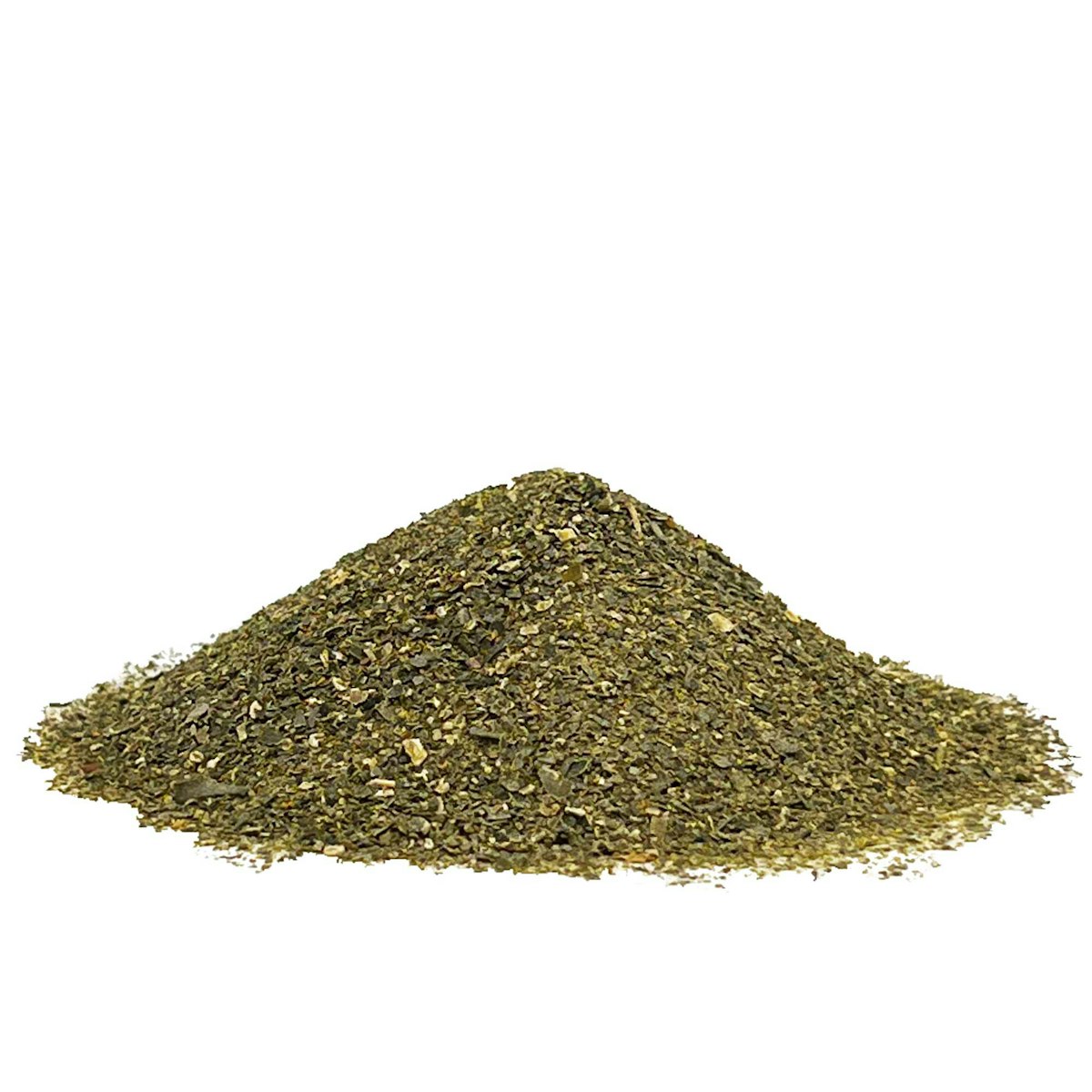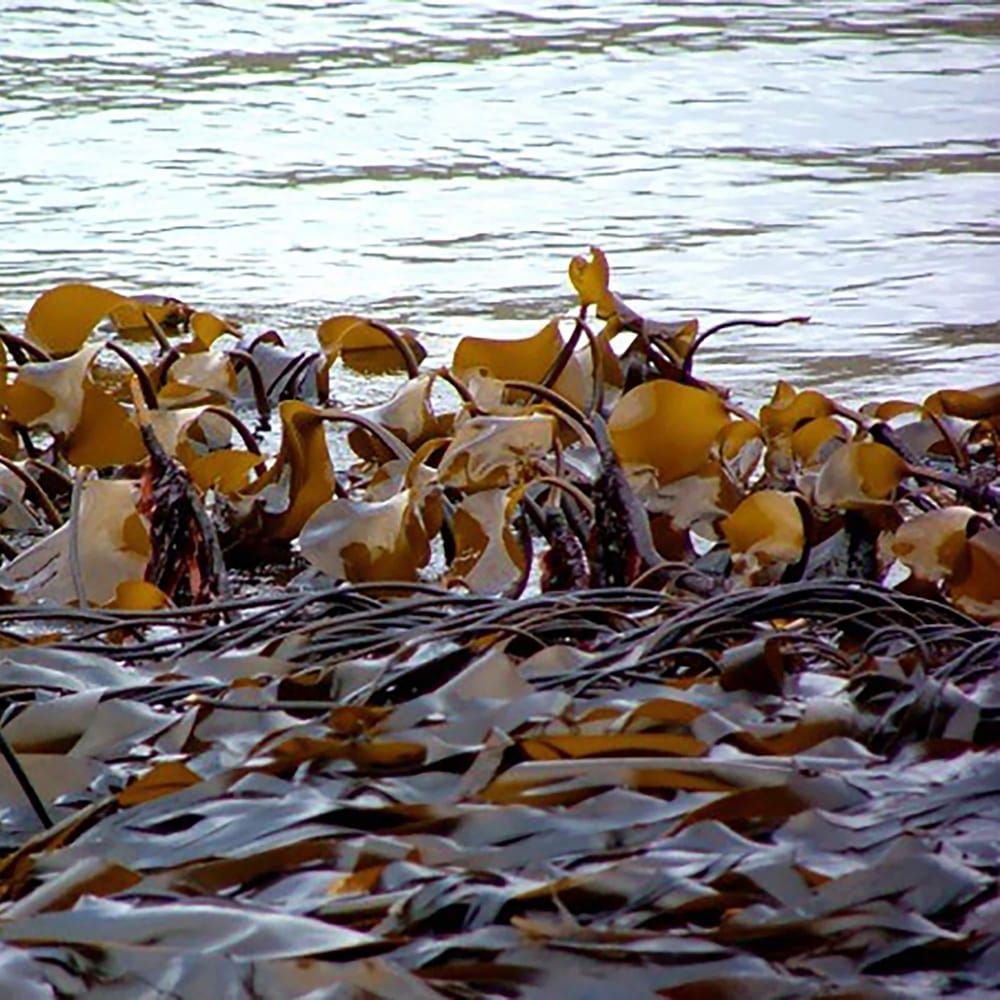Atlantic Laminaria digitata Flakes: The Algalicious Guide

What Makes Atlantic Laminaria digitata Flakes Worth Adding to Your Meals
Table of Contents
- Introduction/TL;DR
- Key Facts
- The Omega Problem We Don't Talk About
- What Actually Makes Atlantic Kombu Different
- European names
- Optimal flake size (2mm)
- Research on Human Gut Health about Kombu
- Ulster University study findings
- Numbers That Actually Matter
- Mineral content per 100g
- Iodine content and WHO warning
- How to Actually Use Laminaria Digitata Flakes
- What works
- What doesn't work well
- Traditional uses
- The Sustainability Angle of Seaweed
- Local sourcing
- Harvesting methods
- Algalicious Quality Control and Testing
- Required certifications
- Testing criteria
- What to Expect from Laminaria digitata?
- The Practical Reality of Kombu Kelp Seaweed
- Cost-benefit analysis
- European Context and Traditions
- Final Thoughts about Laminaria digitata
- Quick Reference - Laminaria digitata Facts
- Research References
TL;DR: European research reveals that Atlantic Kombu (Laminaria digitata) delivers the perfect omega-3 ratio (1:1) while showing promising effects in studies - something our 15:1 Western diets desperately need. Here's what the science actually shows about Europe's most underrated marine superfood.
Key Facts:
- Omega ratio: 0.77-1.28:1 (ω6:ω3) vs European diet's problematic 15-17:1
- Research backing: Recent studies show immune and stress benefits
- EU sourcing: Wild-harvested from pristine Atlantic waters
- Traditional use: Consumed by European coastal communities for centuries
- Daily amount: 2g provides meaningful mineral content
The Omega Problem We Don't Talk About
Here's something that bugs me: everyone talks about getting more omega-3s, but nobody mentions that the real issue might be getting too many omega-6s. The European Food Safety Authority suggests we should aim for a 5:1 ratio maximum. Most of us are hitting 15-17:1.
What does this mean in practice? Picture a typical day: cereal with sunflower seeds, a sandwich with mayo, chicken and rice for dinner. You've consumed about 15g of omega-6 and only 1g of omega-3. It's like eating 15 spoons of inflammation-promoting fats against just 1 spoon of anti-inflammatory fats - your body is constantly out of balance.
That's where kombu gets interesting. Laminaria digitata - the scientific name for this Atlantic brown seaweed - naturally contains omega-6 to omega-3 ratios between 0.77:1 and 1.28:1. Basically the polar opposite of what we're eating.
In other words: while most foods contain more 'bad' than 'good' fats, kombu flips the ratio. For every gram of omega-6, you get at least 0.8g to 1.3g of omega-3. It's like a natural counterbalance - as if you're adding an anti-inflammatory molecule for every inflammatory one. Compare that to sunflower oil (120:1) or even olive oil (11:1).
Garcia-Vaquero and colleagues analyzed seasonal variations in the seaweed's composition in their 2021 study. The omega profile remains consistently favorable throughout the year, which explains why coastal European communities have relied on this seaweed for generations.
What Actually Makes Atlantic Kombu Different
I kept seeing "kombu" everywhere - in health food stores, in those trendy poke bowls. But most of it comes from the Pacific. The Atlantic variety (Laminaria digitata) grows in colder European waters, and that makes a real difference.
Garcia-Vaquero's research showed that protein content in Laminaria digitata peaks during winter and spring - up to 11% - then stabilizes during warmer months. The seaweed builds up nutrients to thrive in harsh Atlantic conditions, which concentrates the beneficial compounds we're after.
European names for this stuff:
- France: Kombu royal or Kombu de Bretagne
- Germany: Fingertang (finger kelp)
- Spain: Laminaria
- Italy: Kombu atlantico
- Netherlands: Vingerwier
The 2mm flakes we get are the sweet spot for cooking. Not powder (which dissolves too fast), not whole sheets (which take forever to rehydrate). Just small enough to integrate into food, big enough to keep some texture and deliver the full mineral profile.
Research on Human Gut Health about Kombu
Recent research from Ulster University (Strain et al., 2019) investigated what happens when Laminaria digitata polysaccharides interact with human gut bacteria using an in vitro colonic model with actual human fecal samples.
What the human gut research found:
- Your gut bacteria produce more beneficial compounds (short-chain fatty acids)
- The good bacteria in your gut increase while the problematic ones decrease
- It works like a prebiotic - feeding your beneficial gut bacteria
- May support a healthier metabolism
The researchers noted that Atlantic seaweed created measurable improvements in gut bacteria within hours - much faster than many supplements.
Laminaria digitata numbers That Actually Matter
Here's what laboratory analysis of Laminaria digitata flakes typically shows:
Minerals per 100g:
- Potassium: 8,010mg (roughly 4x what you'd get from bananas)
- Calcium: 846mg (more than most dairy)
- Iron: 7.3mg (similar to red meat)
- Magnesium: 560mg
- Natural iodine: 227mg/kg
The iodine content is particularly relevant. The WHO recently warned that Europeans are at increasing risk for iodine deficiency. We're drinking more plant-based milk (no iodine), eating less fish, and most processed food salt isn't iodized. In Germany, only 9% of processed food salt contains added iodine.
If you have thyroid conditions or take thyroid medication, consult your healthcare provider before adding seaweed to your diet.
How to Actually Use Laminaria Digitata Flakes
I'm not making traditional Japanese dashi every morning. Most days, I just sprinkle about 2g on whatever I'm eating and get on with my day.
What works:
- Mixed into scrambled eggs (adds a subtle saltiness)
- Sprinkled on avocado toast
- Stirred into soup (rehydrates in hot liquid)
- Added to salad dressing for umami depth
What doesn't work as well:
- Raw on salads (too chewy)
- Large amounts (the ocean taste becomes overwhelming)
- In sweet foods (obviously)
The French seem to have figured this out centuries ago. They call it "kombu royal" and use it in stocks and broths. Germans add "Fingertang" to traditional northern soups. Coastal Spanish communities have been putting "laminaria" in seafood dishes for generations. There's a reason these traditions stuck around.
The Sustainability Angle of Seaweed
One thing I appreciate about European Laminaria digitata is that it's harvested relatively close to where I live. No shipping from Asia, shorter supply chains, and you can actually trace where it comes from.
The harvesting method matters too. Traditional hand-cutting leaves the root system intact, so the seaweed regrows naturally. Industrial trawling can damage the ocean floor and disrupt marine ecosystems - which defeats the purpose of choosing sustainable food.

Most reputable European suppliers will tell you exactly which Atlantic waters their seaweed comes from - Northern Atlantic regions with pristine water quality. If they can't or won't tell you, that's worth questioning.
To put this in perspective: importing kombu from Japan means roughly 10.000 km of transport. Getting it from Europe? Maybe 500 – 2.000 km. That's not just about carbon footprint - fresher product, less packaging, and supporting European coastal communities.
Algalicious Quality Control and Testing
This matters because seaweed can absorb whatever's in the water around it. You want to see:
- EU organic certification (FR-BIO-01)
- Heavy metals testing by certified laboratories1
- Microbiological safety testing1
- Harvest location (European Northern Atlantic waters)
- Processing method (air-dried preserves more nutrients)
I've seen products that claim to be "premium kombu" but provide zero information about testing or origin. That's not the kind of gamble I want to take with something I'm eating daily.
What to Expect from Laminaria digitata?
Laminaria digitata works best as part of a consistent routine rather than a one-off supplement. The mineral profile is impressive, and the omega-3 content could help balance our omega-6 heavy diets over time.
The gut health research suggests there could be digestive benefits, though individual results will vary. What I've noticed personally is that it's an easy way to get minerals from a whole food source rather than synthetic supplements.
The animal research indicates potential immune and stress-related benefits, but we're still waiting for human clinical trials to confirm these effects in people.
The Practical Reality of Kombu Kelp Seaweed
A 50 g bag of quality Laminaria digitata flakes costs roughly what I'd spend on a coffee and sandwich. At 2 g per day, that's roughly a month's supply.
The value proposition makes sense. I like knowing I'm getting minerals from a whole food source that's been consumed safely for centuries. The subtle umami flavor it adds to meals is a bonus, and there's something satisfying about eating food that's been harvested from the same Atlantic waters for generations.
If you're already eating a varied diet with plenty of vegetables and fish, seaweed flakes are more of a nutritional insurance policy. But given how mineral-depleted many modern diets are, that insurance feels worthwhile.
European Context and Traditions
Eating seaweed isn't some new health trend in Europe. Coastal communities have been doing it forever, and there's usually a good reason traditional foods stick around.
In Ireland, they have "dulse" and other seaweeds that were traditional foods during difficult times. Bretons in France have dozens of seaweed recipes that are still used today. Norwegians include "tang" (their word for kelp) in traditional dishes.
The difference now is that we can get consistently tested, properly processed seaweed year-round, rather than just what's available seasonally on local beaches. That consistency matters when you're trying to maintain steady mineral intake.
Final Thoughts about Laminaria digitata
I started eating Laminaria digitata flakes because I was curious about the omega-3 research and wanted a natural iodine source. A year later, it's just part of my routine - like taking vitamins, but from actual food.
The research on gut health is intriguing, and the mineral profile addresses some genuine nutritional gaps in European diets. The traditional use by coastal communities suggests it's safe for long-term consumption.
The key is choosing quality products from suppliers who can prove their seaweed is clean, properly harvested, and tested according to EU standards. Start with small amounts (1-2g per day) and see how you respond.
Think of it as a traditional European food that happens to have an interesting nutritional profile. The science is promising, the safety record is solid, and the taste grows on you.
Ready to try Atlantic Laminaria digitata?
Start with our tested and certified organic flakes from pristine European waters.
Shop Algalicious Kombu Flakes
Quick Reference - Laminaria digitata Facts:
- Scientific name: Laminaria digitata
- Omega ratio: Approximately 1:1 (ω6:ω3)
- Peak harvest season: Winter/spring for maximum protein
- Daily amount: 2 g based on traditional use
- Key minerals: Potassium, calcium, natural iodine, magnesium
- EU sources: Northern Atlantic waters (Ireland, Scotland, Brittany, Norway)
- Processing: Air-dried 2mm flakes for optimal use
- Certifications to look for: EU organic, heavy metals testing, microbiological safety
Research References:
- Garcia-Vaquero, M., et al. (2021). Seasonal and geographical variations in the biochemical composition of the brown seaweed Laminaria digitata. Marine Drugs, 19(11), 611. https://doi.org/10.3390/md19110611
- Costa, M., et al. (2022). Effects of Laminaria digitata on growth performance and immune response in poultry. BMC Veterinary Research, 18(1), 245. https://doi.org/10.1186/s12917-022-03348-8
- Ribeiro, A., et al. (2023). Immunomodulatory effects of Atlantic seaweed supplementation in animal models. Scientific Reports, 13, 8847. https://doi.org/10.1038/s41598-023-36098-0
- World Health Organization Regional Office for Europe. (2024). Europe at risk of iodine deficiency resurgence. https://www.medscape.com/viewarticle/europe-risk-iodine-deficiency-resurgence-2024a1000c3k
- Strain, C.R., et al. (2019). Effects of a polysaccharide-rich extract from Irish brown seaweed Laminaria digitata on human gut microbiota in vitro. European Journal of Nutrition, 58, 2481–2491. https://link.springer.com/article/10.1007/s00394-019-01909-6
¹ Testing performed by JHG Analytical Services Ltd, Waterford, Ireland
Note: Studies referenced include both laboratory analysis and animal research. Individual results may vary. Consult healthcare providers for specific nutritional advice.